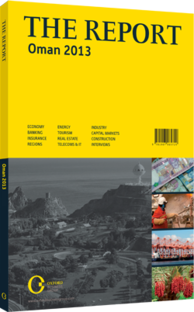New plans and regulations: Islamic banking has been authorised in a period of restructuring
The period of 2011-12 saw a raft of new legislative and regulatory measures in the sultanate, alongside efforts to develop the financial and capital markets. Oman has now begun its eighth five-year plan, which runs from 2011 to 2015. This strategic programme is aimed at bringing the country towards the goals outlined in its long-term development plan, Vision 2020. Running concurrently with the eighth five-year plan is the Capital Markets Authority’s (CMA’s) Strategic Plan, which was approved by the government in 2011.
The plan sets overall parameters for market development, while individual legislative changes have been made to bring the strategic vision about.
Islamic Banking Changes
Most well-known of these modifications were the Central Bank of Oman’s authorisation of Islamic banking (see Banking chapter) and the drafting of new regulations for the introduction of Islamic insurance – takaful(see Insurance chapter) – and Islamic bonds – sukuk (see analysis) in 2011.
These changes had implications for the CMA, which, as the regulator of the insurance and bond markets, produced its own draft regulations for these new products. The authority also signed a memorandum of understanding with international law firm Clifford Chance to work together on producing a full regulatory framework for takaful and sukuk in Oman.
The resulting draft takaful law has been completed by the CMA and consultation and draft legislation on sukuk has recently been completed (see analysis). The arrival of Islamic banking also has implications for the capital markets, with the CMA giving its input on the preparation of amendments to the Banking Law to allow for these special intermediaries.
These changes have also been taking place at a time of heightened legislative activity by the government. More powers have been granted to the state audit authorities, which are now directly connected with Sultan Qaboos bin Said Al Said. There has also been a major series of personnel changes in the top government ministries. The CMA saw a change of leadership in 2011, with Sheikh Abdullah bin Al Salmi − who has worked in the CMA since its inception − taking over as the organisation’s executive president.
The year 2011 also saw amendments to the Executive Regulation of the Capital Markets Law, the issuance of secured financing directives, the Clearance and Settlement Regulation and the rules governing the trading commissions of the Muscat Securities Market (MSM).
Margin Trading
That same year the CMA issued a circular in favour of introducing margin trading for the first time since 2001. This activity had been banned due to the fact that unregulated margin trading had been one of the main reasons behind the MSM’s troubles in 1998. Since then, the market has been thoroughly reorganised, with the CMA proposing much stricter guidelines for trading activity.
Thus, when the CMA Board gave final approval for margin trading, several intermediaries came forward to express an interest in beginning these trades. The CMA is hopeful that 2013 would finally see this practice take off, bringing the potential benefits of deepening and widening the MSM.
Restructuring
In 2012 further regulations were brought out, as the CMA strove to develop the capital markets and take on board new responsibilities. Regarding the latter, measures were taken to bring mortgage financing under the CMA’s purview. This formed part of wider moves to create a single regulator for the real estate sector − given its importance to the general economy − and was part of the process of reorganising and re-labelling the sultanate’s regulators, most likely turning the CMA into a financial sector authority.
Given these widening roles, there has also been a recent attempt to restructure the CMA Law. When the authority was first incorporated in 1998, its remit was somewhat narrower than it is now. A suitable, updated law may therefore be necessary to redefine the CMA’s relationship with the other regulators, as well as with particular financial market segments.
You have reached the limit of premium articles you can view for free.
Choose from the options below to purchase print or digital editions of our Reports. You can also purchase a website subscription giving you unlimited access to all of our Reports online for 12 months.
If you have already purchased this Report or have a website subscription, please login to continue.

